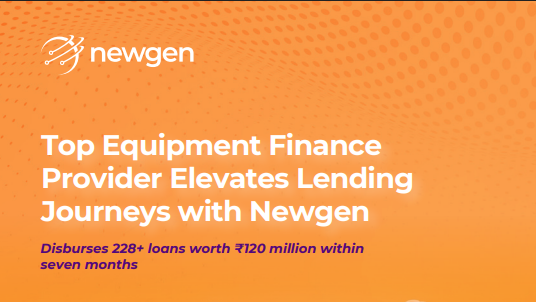Service requests today span across departments and stakeholders, ranging from account updates, HR queries and facility management to external customer complaints, vendor access requests, or partner onboarding. With the rising advancement of technologies, managing these requests has certainly become easier. However, they fall short in meeting the enterprise productivity and experience expectations. Employees still bounce between emails, forms, chats, and portals, while customers and partners face delays and poor visibility into their requests.
The real issue? The absence of a unified AI-first Enterprise Service Request Management (SRM) system.
And that’s exactly where AI agents step in.AI agents bring context, decisioning, and autonomy to service request management across internal and external journeys. They intelligently orchestrate, prioritize, communicate, and resolve. From triaging requests to guiding resolution paths, these agents transform service delivery into a seamless experience for employees, customers, vendors, and partners alike. Let’s explore four real-world use cases where modern enterprise service request management system is redefining how enterprises manage internal requests, with speed, intelligence, and precision.
4 Real-world Use Cases
1. Customer Service Requests Handled by Conversational AI Agents
The old way:
Customers reached out to support teams through phone calls, emails, or web forms—often facing long wait times, unclear next steps, and repetitive follow-ups. Agents, in turn, spent hours triaging queries, chasing context, and manually updating systems.
With AI agents:
AI-driven virtual agents handle basic IT requests via chat or email. They automatically categorize issues, pull past resolution data, and even initiate fixes, like status updates, refunds, or appointment bookings. Complex issues are routed to human agents with all relevant context attached, enabling faster, more personalized responses.
What it delivers:
- 24×7 support with instant query resolution
- Omnichannel engagement powered by natural language understanding
- Reduced agent workload and faster case handling
- Context-rich handoffs for better customer satisfaction
2. Facility Requests Resolved with Predictive AI Workflows
The old way:
Employees submitted facility requests via emails or verbal cues, “my chair’s broken,” “the AC’s not working.” Responses were slow due to unclear ownership and lack of visibility.
With AI agents:
Employees log issues via a central portal or conversational assistant. AI agents auto-categorize, prioritize based on urgency, and assign tickets to the right technician based on skill and availability. They also track completion times and send real-time updates to requestors.
What it delivers:
- Better routing of facility issues using historical data
- Timely resolutions based on predictive workload balancing
- Transparent, real-time updates to employees
- Data-driven insights to improve workplace experience
3. Partner Access Requests Managed with AI-driven Governance
The old way:
When a new partner, distributor, or vendor needed access to enterprise tools, portals, or shared data, the process was slow and inconsistent. Emails bounced across teams, approvals got delayed, and manual errors created compliance risks and strained business relationships.
With AI agents:
AI agents automatically validate partner access requests against predefined roles, business rules, and contractual terms. Based on sensitivity, they route approvals to the right stakeholders, whether it’s procurement, legal, or IT security. These agents also monitor usage, flag anomalies, and auto-revoke access upon contract expiry or inactivity.
What it delivers:
- Faster partner onboarding with automated access provisioning
- Policy-based approvals that reduce human error
- Continuous compliance with real-time audit trails
- Reduced risk of unauthorized access or data leaks
4. Autonomous Employee Onboarding
The old way:
New hire onboarding required coordination between HR, IT, admin, and facilities, often handled via emails and spreadsheets. This led to delays, missed steps, and follow-ups.
With AI agents:
An onboarding request triggers AI agents that auto-initiate required workflows across departments. These agents validate role-based requirements, assign tasks, remind stakeholders, and escalate if SLAs are breached, all without manual intervention.
What it delivers:
- Intelligent task allocation based on role, location, or team
- Proactive alerts and SLA-based escalations
- Smooth Day-1 experience with real-time visibility
How Newgen Leads the Way?
Newgen’s Agentic Enterprise Service Request Management enables enterprises to automate, orchestrate, and resolve service requests with precision and speed. The solution enhances service journeys across both employee and customer ecosystems, with AI agents tailored to business environment. From managing interactions across channels to resolving cases dynamically and handling exceptions with ease, these agents enable faster response times, lower costs, and a more personalized customer experience.
Key Capabilities of NewgenONE Agentic Enterprise Service Request Management:
- Dynamic Case Management:
End-to-end handling of customer queries, complaints, and requests with AI-driven routing, approvals, and GenAI-powered summaries for faster resolutions - Omnichannel Engagement:
Seamless support across chat, email, SMS, and voice, captured and managed through a unified communication hub powered by agentic AI - Intelligent Routing & Escalation:
Smart prioritization, SLA tracking, and real-time alerts to ensure timely actions and first-time right outcomes - Self-service Experience:
Empower customers with a conversational AI portal to raise requests, track status, and get instant assistance anytime, anywhere - Smart Knowledge Management:
AI-powered knowledge base for agents, regularly updated with verified insights to accelerate resolution - Seamless Integration:
API-first architecture that easily connects with existing enterprise systems
Final Thoughts
AI agents are transforming service request management, from manual delays to intelligent, seamless resolution. Enterprises are now resolving faster, operating smarter, and delivering better experiences across the board.
You might be interested in

17 Nov, 2025
Designing a Scalable Customer Experience Strategy with Customer Communication Management (CCM)



